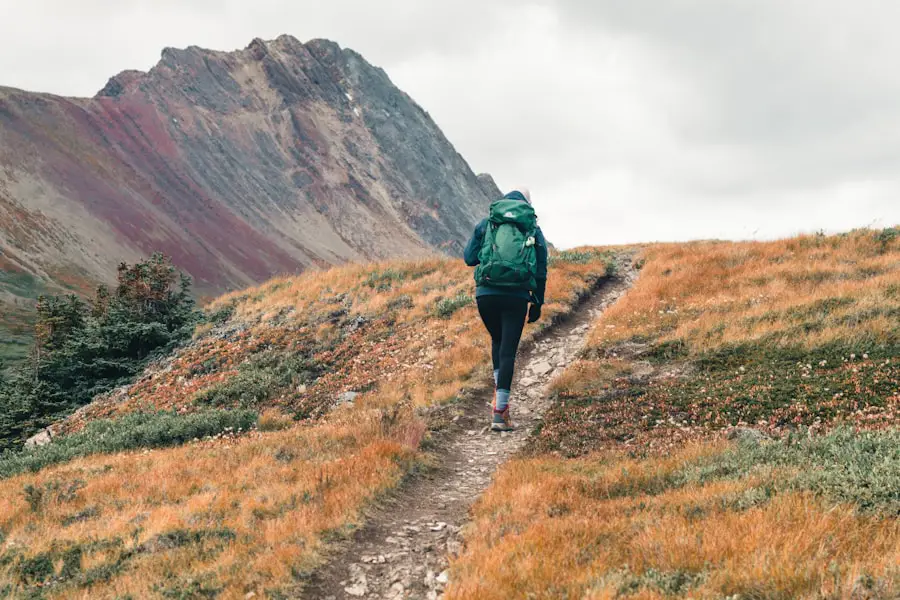Walking sticks, often referred to as trekking poles or hiking staffs, have become an essential accessory for outdoor enthusiasts. Their design has evolved over the years, transitioning from simple wooden staffs used by ancient travelers to modern, lightweight poles crafted from advanced materials like carbon fiber and aluminum. These tools are not merely a fashion statement; they serve a multitude of practical purposes that enhance the hiking experience.
As more people venture into the great outdoors, the popularity of walking sticks has surged, with hikers of all skill levels recognizing their benefits. The use of walking sticks is not limited to seasoned trekkers; they are increasingly embraced by casual walkers and those embarking on leisurely nature strolls. The versatility of these tools makes them suitable for various terrains and conditions, from rugged mountain trails to gentle forest paths.
As hikers seek to improve their comfort and safety while exploring nature, understanding the advantages of walking sticks becomes paramount. This article delves into the myriad benefits that walking sticks offer, highlighting their role in enhancing stability, reducing strain, and improving overall hiking performance.
Key Takeaways
- Walking sticks provide stability and support for hikers, especially on uneven terrain.
- They help reduce strain on joints, making hiking more comfortable and enjoyable.
- Walking sticks improve balance and increase endurance, allowing hikers to tackle longer and more challenging trails.
- They assist with uphill and downhill hiking, providing added support and stability.
- Walking sticks offer protection from wildlife and hazards, making them a valuable hiking accessory.
Stability and Support Provided by Walking Sticks
One of the primary advantages of using walking sticks is the stability they provide. When traversing uneven or rocky terrain, the risk of slipping or losing balance increases significantly. Walking sticks act as an additional point of contact with the ground, allowing hikers to distribute their weight more evenly and maintain a steady footing.
This added support is particularly beneficial for those who may have balance issues or are recovering from injuries, as it instills confidence in their ability to navigate challenging landscapes. Moreover, walking sticks can help prevent falls by offering a reliable means of support when navigating tricky sections of a trail. For instance, when crossing streams or climbing over boulders, a well-placed stick can provide the necessary leverage to stabilize oneself.
This is especially crucial in areas where the ground is slippery or unstable, as it allows hikers to focus on their footing rather than worrying about potential tumbles. The psychological comfort that comes from knowing there is an extra layer of support can significantly enhance the overall hiking experience.
Reduction of Strain on Joints

Hiking can be a strenuous activity that places considerable stress on the joints, particularly in the knees and ankles. Walking sticks serve as an effective tool for alleviating this strain by redistributing weight away from these vulnerable areas. When using trekking poles, hikers can engage their upper body muscles, which helps to share the load during descents and ascents.
This redistribution not only reduces the impact on joints but also minimizes fatigue, allowing for longer and more enjoyable hikes. Research has shown that using walking sticks can decrease the force exerted on the knees by up to 25%. This reduction is particularly beneficial for individuals with pre-existing joint issues or those who are prone to discomfort during physical activity.
By providing additional support and stability, walking sticks enable hikers to maintain a more comfortable pace without overexerting themselves.This is especially important for long-distance hikes where joint preservation becomes crucial for overall endurance and enjoyment.
Improved Balance on Uneven Terrain
| Participant | Pre-test Balance Score | Post-test Balance Score | Improvement |
|---|---|---|---|
| Participant 1 | 7 | 9 | 2 |
| Participant 2 | 5 | 8 | 3 |
| Participant 3 | 6 | 7 | 1 |
Navigating uneven terrain presents unique challenges that can test even the most experienced hikers. Roots, rocks, and sudden drops can create obstacles that require careful maneuvering. Walking sticks enhance balance by providing an extra point of contact with the ground, allowing hikers to adjust their center of gravity more effectively.
This is particularly advantageous when traversing narrow paths or steep inclines where maintaining equilibrium is essential. In addition to improving physical balance, walking sticks can also boost mental confidence. Hikers who feel secure in their footing are more likely to explore challenging trails and push their limits.
The psychological aspect of balance cannot be overlooked; knowing that one has a reliable tool to assist in maintaining stability can encourage individuals to tackle more demanding hikes. This newfound confidence can lead to a greater appreciation for nature and a willingness to explore diverse landscapes.
Increased Endurance and Stamina
The use of walking sticks can significantly enhance a hiker’s endurance and stamina over long distances. By engaging both the upper and lower body during hikes, trekkers can distribute their energy expenditure more evenly. This dual engagement allows for a more efficient use of muscle groups, reducing fatigue in the legs and enabling hikers to cover greater distances without feeling overwhelmed.
As a result, many hikers find that they can hike longer and enjoy their time outdoors more fully when utilizing walking sticks. Furthermore, walking sticks can help maintain a steady rhythm while hiking, which is crucial for endurance. The act of planting the poles in sync with each step creates a natural cadence that can enhance overall pacing.
This rhythmic movement not only conserves energy but also promotes better cardiovascular efficiency. Hikers who adopt this technique often report feeling less fatigued at the end of their journeys, allowing them to enjoy the scenery and experience the tranquility of nature without the burden of exhaustion.
Assistance with Uphill and Downhill Hiking

Hiking uphill and downhill presents distinct challenges that require different strategies for success. When ascending steep inclines, walking sticks provide valuable leverage that can ease the burden on leg muscles. By pushing down on the poles while climbing, hikers can engage their upper body strength, which helps propel them forward and upward with less effort.
This technique not only conserves energy but also allows for a more controlled ascent, reducing the risk of slipping or losing footing. Conversely, descending steep slopes can be particularly taxing on the knees and lower back. Walking sticks serve as shock absorbers during these descents, allowing hikers to maintain better control over their movements.
By using the poles to gauge distance and stability, trekkers can navigate downhill sections with greater confidence and safety. The ability to adjust one’s center of gravity while descending also minimizes the impact on joints, making for a more comfortable hiking experience overall.
Protection from Wildlife and Hazards
In addition to their physical benefits, walking sticks can serve as a protective tool against potential hazards encountered on hiking trails. In areas where wildlife is prevalent, such as bears or snakes, having a sturdy stick can provide an added sense of security. While it is essential to respect wildlife and maintain a safe distance, a walking stick can be used to make noise or create space between oneself and any animals that may pose a threat.
Moreover, walking sticks can help identify hidden dangers along the trail. Hikers can use them to probe ahead for unstable ground or hidden obstacles like holes or loose rocks. This proactive approach not only enhances safety but also fosters a greater awareness of one’s surroundings.
By being vigilant and utilizing walking sticks as tools for exploration, hikers can mitigate risks associated with outdoor adventures.
Multi-functional Use of Walking Sticks
The versatility of walking sticks extends beyond their primary function as hiking aids; they can serve multiple purposes in various outdoor scenarios. For instance, many modern trekking poles come equipped with features such as built-in compasses or adjustable heights that cater to different terrains and user preferences. Some models even include detachable tips designed for specific surfaces like snow or mud, enhancing their functionality across diverse environments.
Additionally, walking sticks can be utilized in emergency situations. In case of injury or fatigue, they can provide support while resting or assist in creating makeshift shelters when needed. Their lightweight design makes them easy to carry, ensuring that hikers have access to these tools whenever necessary.
This multi-functional aspect adds significant value to walking sticks, making them indispensable companions for any outdoor excursion.
Enhanced Posture and Alignment
Proper posture is crucial for maintaining comfort during long hikes; poor alignment can lead to fatigue and discomfort over time. Walking sticks encourage better posture by promoting an upright stance while hiking. When using trekking poles correctly, hikers are less likely to hunch over or lean excessively forward, which can strain the back and neck muscles.
Instead, they are encouraged to engage their core muscles and maintain an aligned position throughout their journey. This improved posture not only enhances comfort but also contributes to overall efficiency while hiking. With better alignment comes increased oxygen flow and reduced muscle tension, allowing hikers to move more freely and effortlessly through challenging terrains.
As a result, individuals who prioritize proper posture through the use of walking sticks often find themselves enjoying longer hikes with less discomfort.
Potential for Speed and Efficiency
While hiking is often associated with leisurely exploration of nature, many enthusiasts seek to improve their speed and efficiency on trails. Walking sticks can play a pivotal role in achieving this goal by facilitating a more dynamic movement pattern. By incorporating upper body strength into each stride through pole planting, hikers can increase their pace without sacrificing energy levels.
The rhythmic motion created by using walking sticks allows for smoother transitions between steps, which can lead to faster overall speeds on flat or rolling terrain. Additionally, this technique helps maintain momentum during climbs and descents, enabling hikers to navigate trails with greater agility. As individuals become accustomed to using walking sticks effectively, they often discover newfound capabilities that enhance their overall hiking experience.
Embracing the Benefits of Walking Sticks for Hiking
Walking sticks have emerged as invaluable tools for hikers seeking stability, support, and enhanced performance on trails. Their ability to reduce strain on joints while improving balance makes them essential companions for both novice walkers and seasoned adventurers alike. As outdoor enthusiasts continue to explore diverse landscapes, embracing the benefits of walking sticks will undoubtedly lead to safer and more enjoyable hiking experiences in nature’s embrace.
If you are an avid hiker, you may already know the benefits of using walking sticks for hiking. They can provide stability, reduce strain on your joints, and help you maintain balance on uneven terrain. However, if you are looking for the perfect carry-on luggage for your next hiking adventure, you may want to check out this article on 5 Must-Have Hardside Carry-On Luggage with Spinner Wheels for Spring 2025. Having the right luggage can make your hiking trip even more enjoyable and stress-free.
FAQs
What are the benefits of using walking sticks for hiking?
Using walking sticks for hiking can provide added stability and support, reduce strain on the knees and joints, improve balance, and help distribute weight more evenly.
How do walking sticks help with uphill and downhill hiking?
Walking sticks can provide extra support and stability when hiking uphill, helping to propel the body forward. When hiking downhill, they can help reduce the impact on the knees and joints by providing additional support and balance.
Are there different types of walking sticks for hiking?
Yes, there are different types of walking sticks for hiking, including traditional single walking sticks, adjustable trekking poles, and foldable hiking poles. Each type offers different features and benefits to suit individual preferences and hiking needs.
How do I choose the right walking sticks for hiking?
When choosing walking sticks for hiking, consider factors such as weight, material, grip, and adjustability. It’s important to select walking sticks that are comfortable to hold, durable, and suitable for the terrain you will be hiking on.
Can walking sticks be used for more than just hiking?
Yes, walking sticks can be used for a variety of outdoor activities, including trekking, backpacking, snowshoeing, and mountaineering. They can also be used for walking on uneven or slippery terrain, providing added stability and support.
